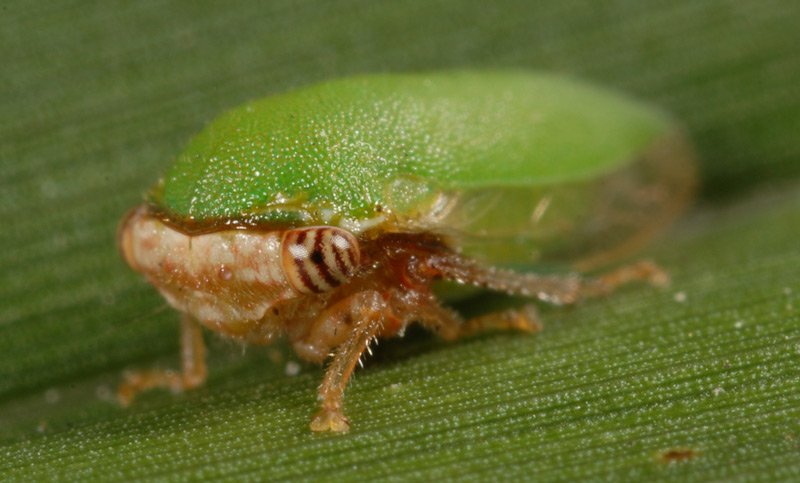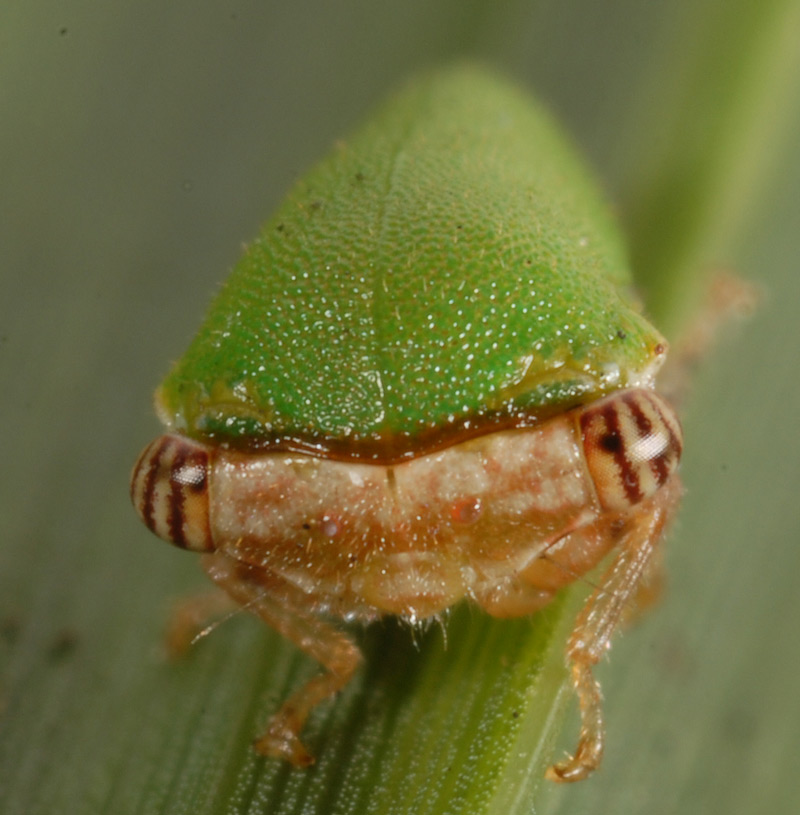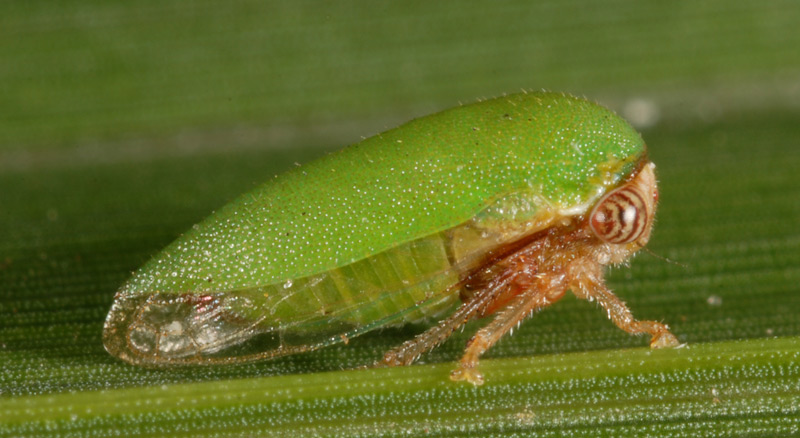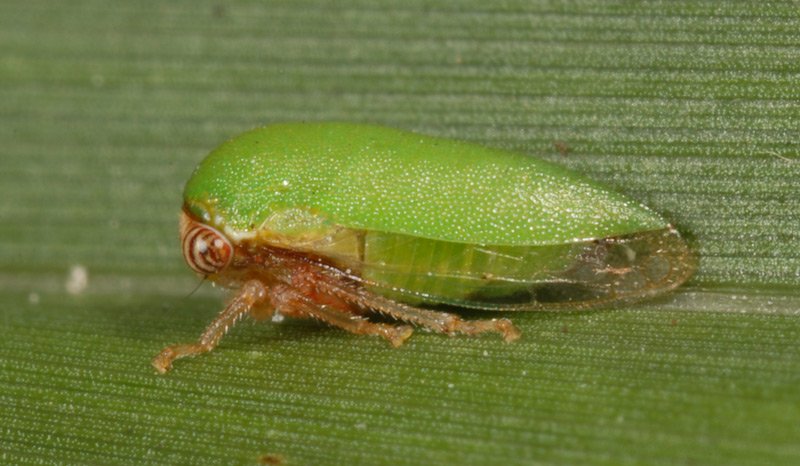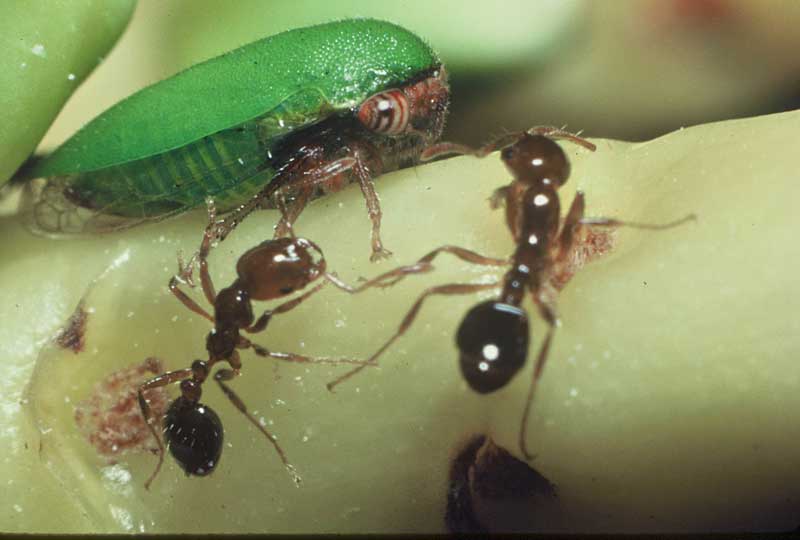Idioderma Hopper
|
adult frontal view; Photo by Lyle Buss, University of Florida |
|
adult frontal view; Photo by Lyle Buss, University of Florida |
|
adult lateral view; Photo by Lyle Buss, University of Florida |
|
adult dorsal view; Photo by Lyle Buss, University of Florida |
|
adult lateral view; Photo by Lyle Buss, University of Florida |
|
adult with ants; Photo by J. D. de Filippis, from Insects on Palms, used with permission by CABI Publications |
Scientific name
Idioderma virescens Van Duzee
Family
Membracidae (Suborder Auchenorrhyncha, Superfamily Membracoidea (Cicadelloidea))
Synonyms
Idioderma varia Van Duzee, Hygris virescens Goding
Description
Adult: Length approximately 4.2 mm; pronotumpronotum:
the dorsal surface of the first thoracic segment
extended back over the scutellumscutellum:
the third of the major divisions of the dorsal surface of a thoracic segment; usually obvious only in the mesothorax and very large in some bugs
and beyond abdominal apex and covering the head, color light dull green, but can be brown (typically males); head triangular from the frontal aspect; more than twice as broad as high, lower half of face brownish-gray; forewings and hindwings with prominent venation, forewings membranous throughout and extending beyond pronotal apex in repose; hind tibia with 3 longitudinal rows of enlarged setae.
Egg: Length 1.12 mm; width 0.24 mm; creamy white, translucent; oblong, over twice as long as wide.
Diagnostic features
Pronotum, typically dull green, enlarged extending over head and beyond abdominal apex. Hind tibia with 3 longitudinal rows of enlarged setae. Nymphs are often tended by ants.
Distribution
Florida, Texas, Cuba, Bahamas, and the Dominican Republic.
Hosts
Palms: Oviposition and nymphal development is known to occur on only two palm species, Serenoa repens (saw palmetto) and Phoenix roebelenii (pygmy date palm). Adults have been reported on various other genera of palms (Cocos, Hyophorbe, Veitchia).
Other: Adults can be found on a diversity of plants other than palms, however nymph feeding has not been reported on other plants.
May be confused with
Idioderma virescens is overall morphologically similar to I. picta of Cuba. Idioderma picta is smaller (3.8 mm) than I. virescens (4.2 mm). The two species have differences in genitalia subgeneital plates and aedeagusaedeagus:
the part of the male genatalia that is inserted into the female during copulation and secretes the sperm
anterior arms. Also, I. picta is only known from Cuba.
Additional comments
Idioderma virescens is the only known true treehopper species on palms.
Both green and brown color morphs are represented by the species. Approximately 90% of the brown morphs are males.
Gravid females oviposit in the rachis or rachilla (infloresecence). Peak populations of nymphs coincide with the peak bloom of saw palmetto (March to April). Nymphs feeds on the rachis or rachilla.
Similar to other treehoppers, ants are associated with and collect honeydewhoneydew:
the sticky, sweet secretion produced by sap-feeding bugs
from Idioderma virescens populations.


